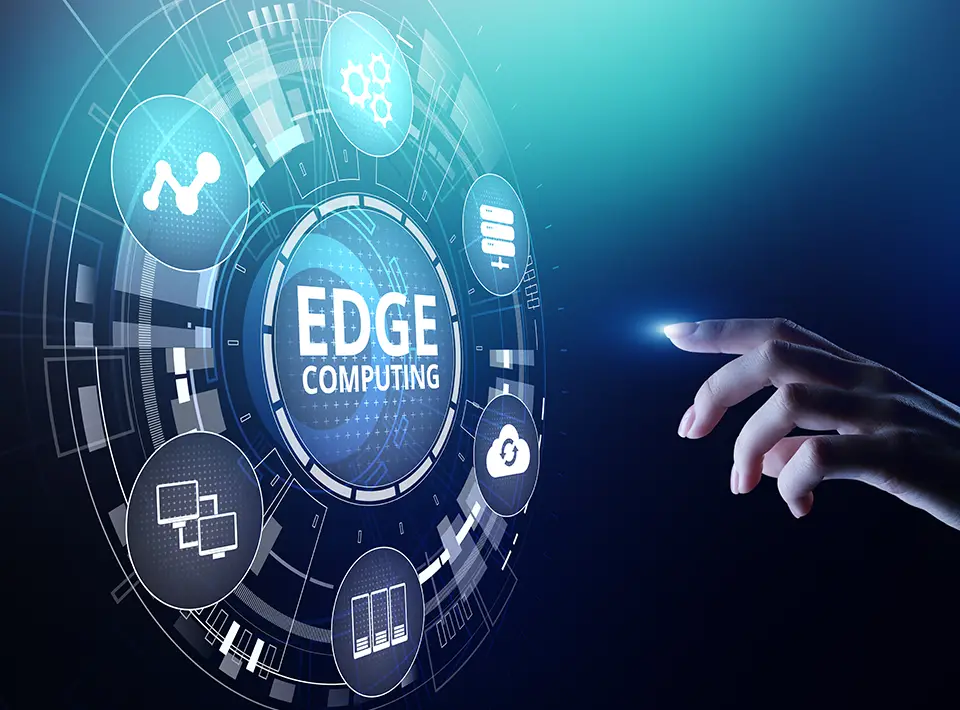The Future of Edge Computing with Cloudflare

Edge computing is a distributed computing paradigm that brings computation and data storage resources closer to the devices and users that need them. This can provide several benefits, including reduced latency, increased bandwidth, and improved security.
Cloudflare is a leading provider of edge computing services. The company’s network of over 200 data centers is located in over 100 countries, providing low-latency access to content and applications for users around the globe.

Cloudflare’s edge computing platform offers several features that make it ideal for a wide range of applications. These features include:
- High performance: Cloudflare’s edge servers are powered by the latest Intel Xeon processors and offer high-bandwidth connectivity.
- Global reach: Cloudflare’s network of data centers is spread across the globe, providing low-latency access to content and applications from anywhere in the world.
- Security: Cloudflare’s edge computing platform is protected by a robust security suite that includes DDoS protection, TLS encryption, and WAF.
- Ease of use: Cloudflare’s edge computing platform is easy to use and can be integrated with a wide range of applications.
Cloudflare’s edge computing platform is used by a variety of companies to improve the performance and security of their applications. For example, Spotify uses Cloudflare’s edge computing platform to deliver music to its users with low latency and high quality. Airbnb uses Cloudflare’s edge computing platform to protect its website and applications from DDoS attacks.
The future of edge computing is bright. As more and more devices and applications are connected to the internet, the need for low-latency, high-bandwidth, and secure computing resources will only increase. Cloudflare is well-positioned to meet this demand with its leading edge computing platform.
Here are some of the ways that Cloudflare is investing in the future of edge computing:
- Research and development: Cloudflare is constantly investing in research and development to improve the performance and features of its edge computing platform.
- Partnerships: Cloudflare is partnering with a variety of companies to develop new edge computing solutions. For example, Cloudflare is partnering with Intel to develop new edge computing hardware.
- Acquisitions: Cloudflare is acquiring companies that can help it expand its edge computing capabilities. For example, Cloudflare recently acquired the company Fastly, which provides a leading edge computing platform.
Cloudflare is committed to leading the future of edge computing. The company’s investment in research and development, partnerships, and acquisitions will help it continue to provide the best edge computing platform for businesses around the globe.The Future Of Edge Computing With Cloudflare
Executive Summary
Edge computing represents an evolution in how data is processed and delivered to internet users. It offers significant advantages in terms of speed, performance, and scalability, and is poised to play a crucial role in the future of computing.
As a key player in the edge computing space, Cloudflare possesses unmatched expertise and infrastructure to deliver edge computing at scale. With its vast global network of servers and sophisticated software, Cloudflare empowers businesses to innovate rapidly and harness the full potential of edge computing.
Introduction
Edge computing is a transformative technology that places computing resources closer to end users. By reducing the physical distance between users and the applications and services they access, edge computing unlocks a wealth of benefits, transforming the way online content is delivered and consumed. Through edge computing, content can be cached and processed at the network edge, reducing latency and enhancing the overall user experience.
FAQs
What is edge computing?
Edge computing refers to the distribution of computing resources and services to locations closer to end users. This approach enables faster and more efficient data processing and content delivery by reducing the distance data must travel.
How does Cloudflare differ from other edge computing providers?
Cloudflare distinguishes itself through its vast global network of servers and robust software platform. This unparalleled infrastructure enables Cloudflare to deliver edge computing at scale, providing unparalleled reach and performance for businesses and end users alike.
What are the benefits of using Cloudflare for edge computing?
Cloudflare provides numerous advantages, including reduced latency, enhanced security, increased reliability, and optimized content delivery. Organizations can leverage Cloudflare’s edge computing capabilities to enhance user experience, reduce costs, and accelerate innovation.
Subtopics
Reduced Latency and Improved Performance
Edge computing dramatically reduces latency by processing data closer to end users. Applications, websites, and streaming services can be accessed near-instantly, enhancing user satisfaction and engagement.
- Near-zero latency: Edge servers positioned close to users eliminate the need for data to travel long distances, resulting in exceptionally low latency and real-time responses.
- Optimized caching: Edge servers cache frequently accessed data, ensuring rapid content delivery and minimizing page loading times.
- Congestion mitigation: Edge computing reduces network congestion by distributing traffic across multiple servers, ensuring smooth and uninterrupted performance even during peak usage periods.
Enhanced Security
Edge computing strengthens security measures by bringing security controls closer to users. Cyber threats can be detected and mitigated at the edge, preventing malicious actors from accessing sensitive data and disrupting operations.
- Distributed DDoS protection: Edge servers are deployed globally, providing a robust defense against volumetric DDoS attacks by distributing the attack across multiple locations.
- Encrypted caching: Edge servers encrypt cached data, safeguarding sensitive information even in the event of a server breach.
- Bot management: Advanced bot detection and mitigation techniques are deployed at the edge, effectively blocking malicious bots from accessing applications and websites.
Increased Reliability and Availability
Edge computing improves reliability and availability by redundantly distributing applications and data across geographically distributed servers. This decentralized approach ensures that services remain accessible even if one or more servers experience downtime.
- Geo-redundant infrastructure: Applications and content are replicated across multiple geographic locations, ensuring uninterrupted access even in the event of regional outages or natural disasters.
- Load balancing: Traffic is automatically distributed across multiple edge servers, preventing overloads and ensuring consistent performance under varying load conditions.
- Fault tolerance: Edge computing architectures include built-in redundancy mechanisms, such as automatic failover and self-healing capabilities, to minimize service disruptions.
Optimized Content Delivery
Edge computing provides optimal content delivery by serving content from the edge server closest to the end user. This approach reduces bandwidth consumption and improves streaming quality, enhancing the user experience.
- Global content acceleration: Edge computing distributes content through a global network of servers, ensuring fast and seamless delivery to users regardless of their location.
- Adaptive bitrate streaming: Videos are automatically transcoded and delivered in the most appropriate format for each user’s device and connection speed, optimizing streaming quality and minimizing buffering.
- CDN with cache control: Cloudflare’s edge network acts as a content delivery network (CDN) with sophisticated cache control capabilities, enabling businesses to manage and refine their content delivery strategies.
Cost Optimization
Edge computing can lead to significant cost savings by reducing bandwidth usage and eliminating the need for dedicated hosting infrastructure. Businesses can pay only for the resources they use, making edge computing a cost-effective solution.
- Reduced data transfer costs: Edge caching reduces the amount of data that needs to be transferred over long distances, minimizing bandwidth costs.
- Cloud substitution: Edge computing can replace dedicated hosting infrastructure, reducing both capital expenditure (CapEx) and ongoing operational expenses (OpEx).
- Optimized network performance: By reducing latency and congestion, edge computing improves network efficiency, leading to reduced costs and improved ROI.
Conclusion
Edge computing represents a paradigm shift in how data is processed and delivered to end users. Cloudflare leads the charge in this transformative technology, empowering businesses to harness the full potential of edge computing through its expansive global network, cutting-edge software, and unparalleled expertise. By embracing edge computing with Cloudflare, organizations can unlock the benefits of reduced latency, enhanced security, increased reliability, optimized content delivery, and significant cost savings, shaping the future of computing and delivering exceptional experiences to their customers.
Keyword Tags
- Edge computing
- Cloudflare
- Latency optimization
- Security enhancements
- Cloud cost optimization

